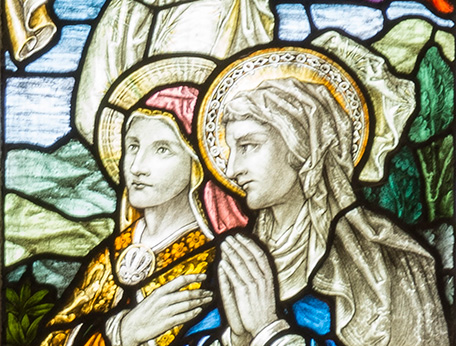Some of the images of saints included in Welsh Saints from Welsh Churches are from churches that are now closed. Where relevant it seemed important to make space for windows whose future is now uncertain, and make sense of windows that may not be available to study in the future.
I visited the Church of St Catherine in Old Colwyn some years ago, by which the time the church had been closed for some time and was inevitably in a rather sorry state. Stained glass at the church consisted of a rather lovely set of decorative windows along the north and south walls and a large pictorial window in the east wall of the chancel. Large paintings and beautiful stencilled work had also been added to the chancel, presumably in the 1880s or 90s.
The north and south nave windows were made in the 1880s by Cox, Sons, Buckley & Co. (one of which is signed), and it seemed possible that the donor of the east window went to the same firm for this window. Although the firm of Cox & Son appears to have been prolific, too little attributed work by the firm has been published to attribute windows to the studio with much certainty. In the 1870s they boasted that their windows were made by ‘eminent church designers’, and this is likely to have made their windows difficult to attribute if the designers’ individual approach to draughtsmanship as well as composition was retained in the manufacture of the windows by the studio.
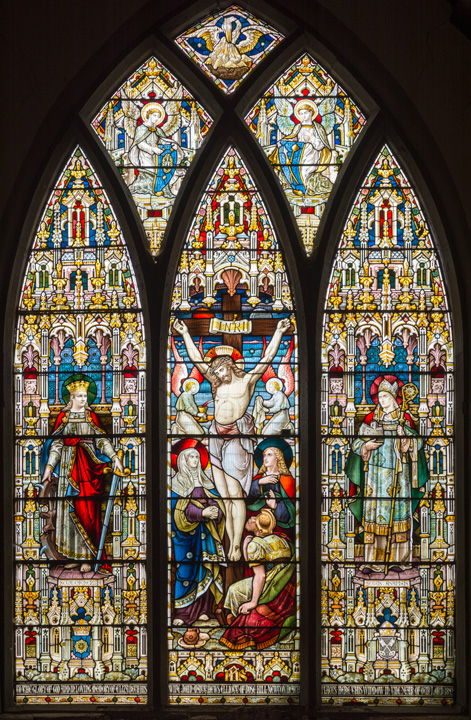
Cox and Sons joined with Buckley & Co. in the 1880s, which was taken over by T.F. Curtis in 1893. I have come across several windows of the 1890s signed by Cox, Sons, Buckley & Co., and although these have a recognisable style, they may not be of much help in identifying their work before that date. I was unable to spot any recognisable similarities in the decorative style of the nave windows with the surrounding decorative work of the east window of St Catherine’s in Old Colwyn, which is dated 1892. The window has a Crucifixion scene at the centre, with figures of St Catherine and St Asaph, patron of the diocese at either side. The face of Catherine has the look of a portrait, presumably that of Elizabeth Matthews Elliott – in whose memory her husband, John Matthews Elliott, commissioned the window. The couple lived in Newton Heath, now part of Manchester, and were no doubt wealthy holidaymakers to the North Wales coast.
As I was unsure who made the window, I continued to look for other possible makers that might have been responsible for it, but for a long time I was unable to come up with any convincing suggestions. However, while completing and designing the book, the work of A.L. Moore attracted my attention because the studio (as A.L. Moore and Son) made a small number windows of Welsh saints that I had been looking at, including a war memorial window that included St David at Ferryside (1901, not included in the book), a window of St Teilo at Pontarddulais (1905), and a later window of St Patrick and St Asaph at Machynlleth (1921).
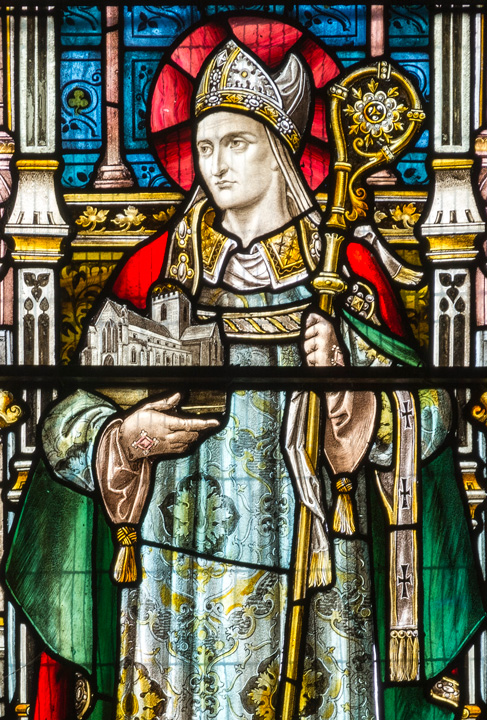
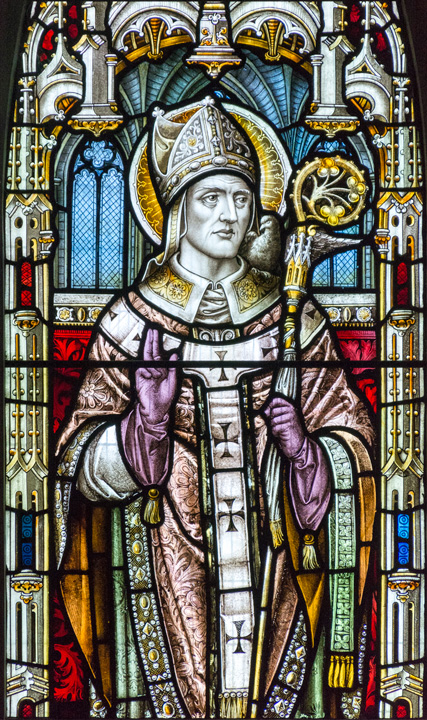
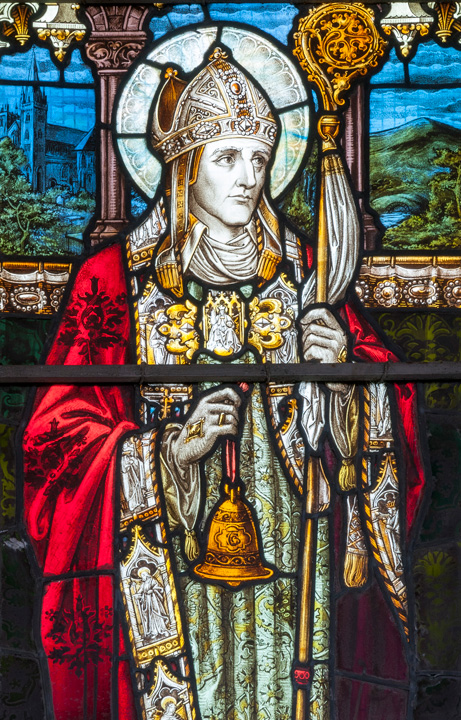
A distinctive treatment of the lips and a similar, rather pallid, painting of the faces is shared by the figures in the windows at Ferryside and Pontarddulais, and the figures all have a lot of delicate patterning on the robes. The faces of two of the women at the empty tomb in the large east window by the firm at Gorseinon (1913, also dedicated to St Catherine) are also reminiscent of Asaph in the Old Colwyn window.
Curiously, the centre light and the painting of the face of Christ at Old Colwyn looks rather different to the rendering of the saints at the sides, and the more detailed curls of his hair can be found in other windows made by Moore in the late 1880s. A set of windows that I attributed to Moore can be found at Penally, and I included one of them in Stained Glass from Welsh Churches, having initially been led to believe that they were by Jones & Willis. These were difficult to attribute as the paint on many of them had faded – a fate shared by another large window of a similar date by them in Pembrokeshire at Prendergast – and poor restoration has replaced some of the original painting. However, a monogram identified the maker as Moore, and some of the surviving heads share this more detailed and less anodyne style of glass painting.
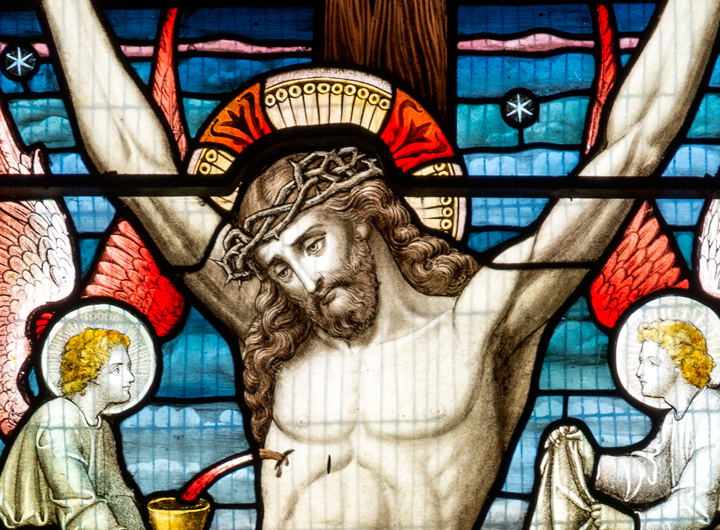
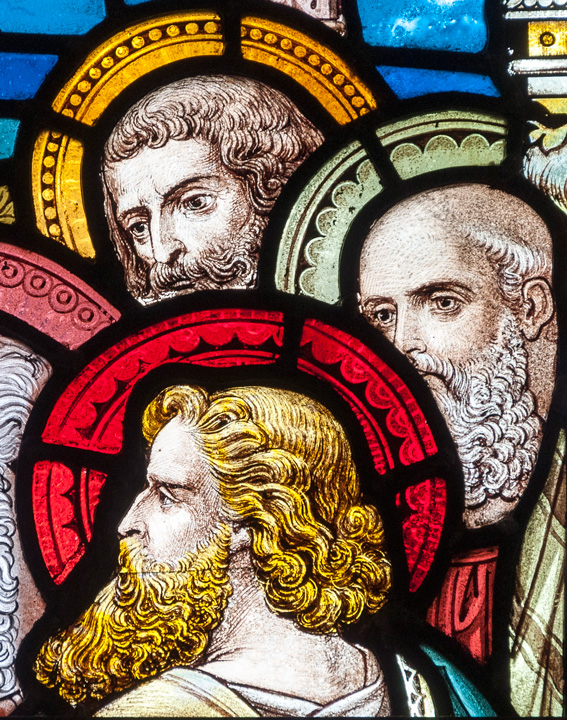
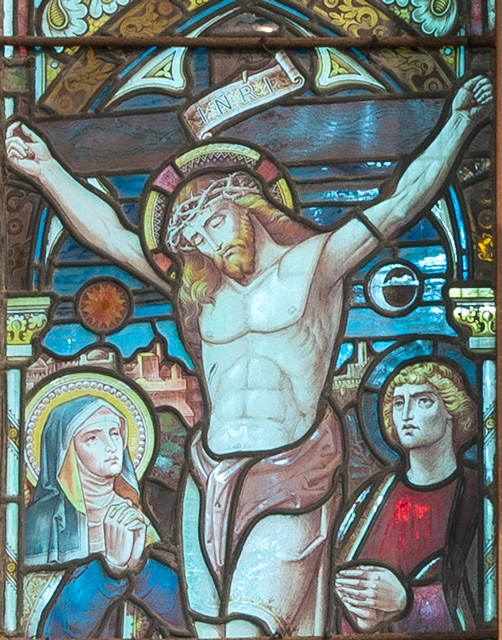
The different styles certainly complicate an attribution of the east window at St Catherine’s, Old Colwyn, to A.L. Moore, and a further window by the firm (The Buildings of Wales volume for Powys says that it is signed, but I missed the signature or mark) of an uncertain date at Llanyre appears to be in an earlier style closer to the Penally windows. Whatever the date, the figure of Christ at Llanyre is very close to that used at Old Colwyn, even accounting for figures of Crucified Christ often being so conventionalised.
Arthur Louis Moore sometimes signed his work as A.L. Moore & Co. before his son, Charles Eustace, became a partner and the firm became known as A.L. Moore & Son, and then A.L. and C.E. Moore from the 1920s. At all stages there were no doubt a number of designers, cartoonists, glass painters and other assistants, and so a variation in the work of the firm is not surprising.
During the process of writing this piece I remembered another window that I had recorded by A.L. Moore at Llantilio Pertholey in Monmouthshire. Having checked my photographs of this window I saw that not only did it form something of a stylistic bridge from the east window of St Catherine’s, Old Colwyn, to others by the firm of A.L. Moore, it also included Welsh saints that didn’t find a place in Welsh Saints from Welsh Churches. St Teilo, patron of the church, and St David stand at the far left and right of the window.
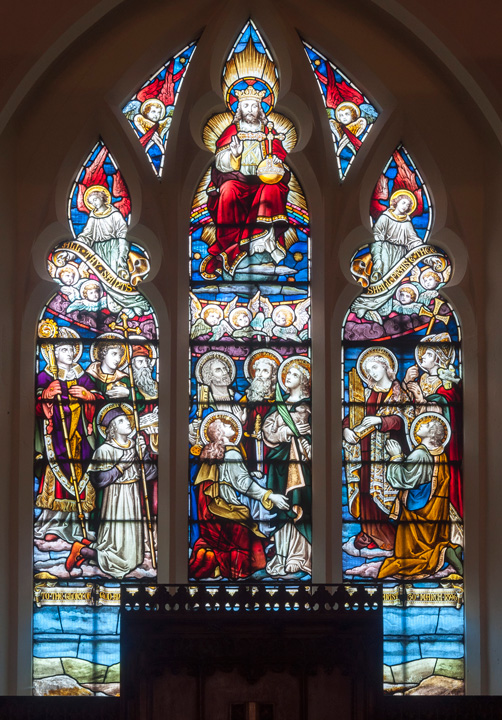
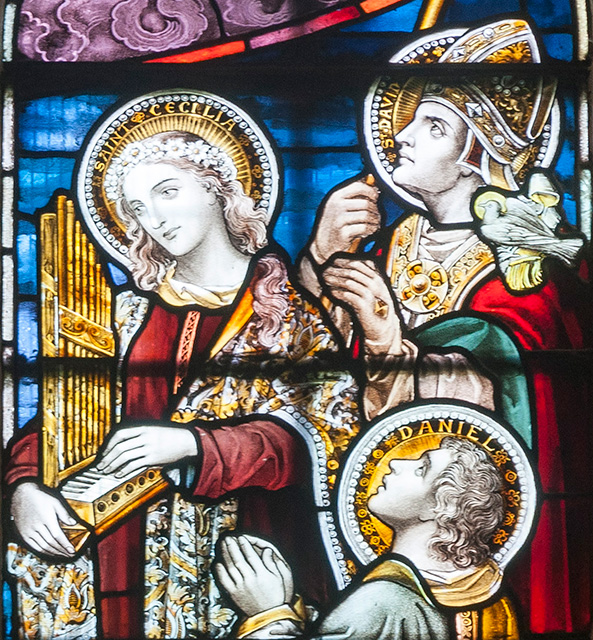
It was made in 1896, so is closer in date to the window at Old Colwyn, and is suggestive of the move towards the paler rendering of faces and has the pursed lips of the figure of Asaph, and of David at Ferryside and Teilo at Pontarddulais. The window at Llantilio Pertholey is also placed in the east wall of the chancel, and the overall design is livelier, with the figures filling the whole aperture of the window without the recourse to the extensive Gothic Revival canopies that can be found so often in church windows of the nineteenth century. The saints are helpfully labelled on their haloes to aid their identification.

